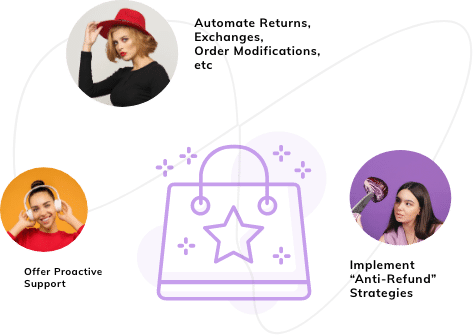Last Updated: April 2024
Any business be it new or old, holds a bunch of knowledge. To store this knowledge in email chains or in the mind of employees is a waste. The information about the company or the job should be available to all employees in just one click as it reduces wastage of time and increases transparency.
The internal knowledge base helps you store all the required information that an employee might require at some point in time. This is easy to access and can only be used by the employees of the company.
In this guide, we have covered all the steps required to build an internal knowledge base and the steps to follow it.
- Elements that are included in an internal Knowledge base.
- Steps to create an internal knowledge base.
Elements that are included in an internal knowledge base

The elements that an internal knowledge base depends on what your team needs to be as productive as possible. It’s totally up to you what to put on your knowledge base but it should provide some sort of new knowledge to anyone who reads it.
Some of the elements that should be on your internal knowledge base are:
- Basic Company Information: Location, website, stock symbols, annual reports, organizational charts, contact lists, newsletters, and many more.
- HR Material: Employee review forms, payslips, employee handbook, etc
- Training material: Policies for new hires, training material specific to each role, health and safety training, protocols, etc.
- Tech Assistance: IT troubleshooting, tech stack information, device and software setup, etc.
- Customer services: FAQs, call scripts, email templates, etc.
- Calendar and events: Important dates, holidays, milestones, and events.
- Employee Compensation and benefits: Paystubs, medical & dental insurance coverage information, parental leaves information, etc.
- Department-specific information: Team goals, the hierarchy of the team, troubleshooting guide, etc,
- Legal Documents: Contracts, release forms, policies, regulatory documents, etc
Steps to create an Internal Knowledge base
Listed down below are the best ways to build an internal knowledge base from scratch:
1. Craft your knowledge base strategy

The very first step to building up a knowledge base is by knowing what questions you want to answer. Conducting an internal audit can be helpful here as it can lead to problems that employees might face.
Some of the important questions that you might want to answer:
- What issues are you trying to solve with an internal knowledge base?
- Who will manage your knowledge base?
- What is the average duration of onboarding an employee and how to lower it?
- Employee complaints to HR
2. Setup your Knowledge base team

Once you have all the questions which need to be answered, the next step is to set up a team. They should solely be responsible for answering the questions and updating the knowledge base regularly.
Setting up a team eliminates any chance of confusion that might occur while creating or updating a knowledge base.
3. Create a user-friendly content dashboard
![]()
No matter how much information your knowledge base hold, if it’s not easy to access that information then it’s of no use.
Following these steps can ensure that your knowledge base is easy to access:
- Applying a search bar so that employees can search their keywords and get the desired result.
- Adding a category to every piece of information.
- Answering the most helpful of the questions and skipping the irrelevant ones.
4. Setup knowledge base guidelines

This is a very important aspect of any knowledge base. Maintaining a standard and keeping up with the flow are important here. Some of the guidelines which you can set up are:
- The word limit should not be more than 600 words ( so that it’s insightful and on the point.)
- Deciding on the tone of voice, whether it should be professional or a bit quirky.
- Choosing the templates so that the knowledge base looks uniform.
- Adding “how to do” videos and images to make it more insightful.
- Use important keywords and tags so that it’s easier for employees to find.
5. Create an implementation plan.
This step helps you in making your employees aware of how to use access your knowledge base. You can take the following initiatives to make them aware:
- Ask employees to contribute ideas and “how-to-do” videos.
- Deciding on a date when a video training session will be held.
- Use the screen-sharing video option to make your employees understand better.
6. Schedule regular maintenance

As the business scale up the information also keeps on adding. No matter how good your knowledge base is, its information will tend to get old. Thus assigning the role to regularly update the knowledge base is important.
Even deciding on a particular interval can also help. For example, updating your knowledge base every quarterly or half yearly can add a lot of new pieces of information.
Conclusion
An internal knowledge base helps you create a transparent work environment. Apart from that it also helps in quick resolution of problems faced by employees. This increase the productivity and the revenue of the company.
Now that you know the essential elements and what are the steps involved in building an internal knowledge base, it can be a bit stressful for you to follow all these steps personally and manage your business at the same time.
To help you with this, we have Saufter’s knowledge base tool. Its AI integration helps in collecting the right set of information and with the help of templates, you can design an informative knowledge base.
Saufter is also a software for 24*7 live support on your product with excellent customer support tools, smart AI integrated solutions, and social media integrations for effective marketing of your store.
Start your 15 days free trial now! And get your knowledge base ready.









